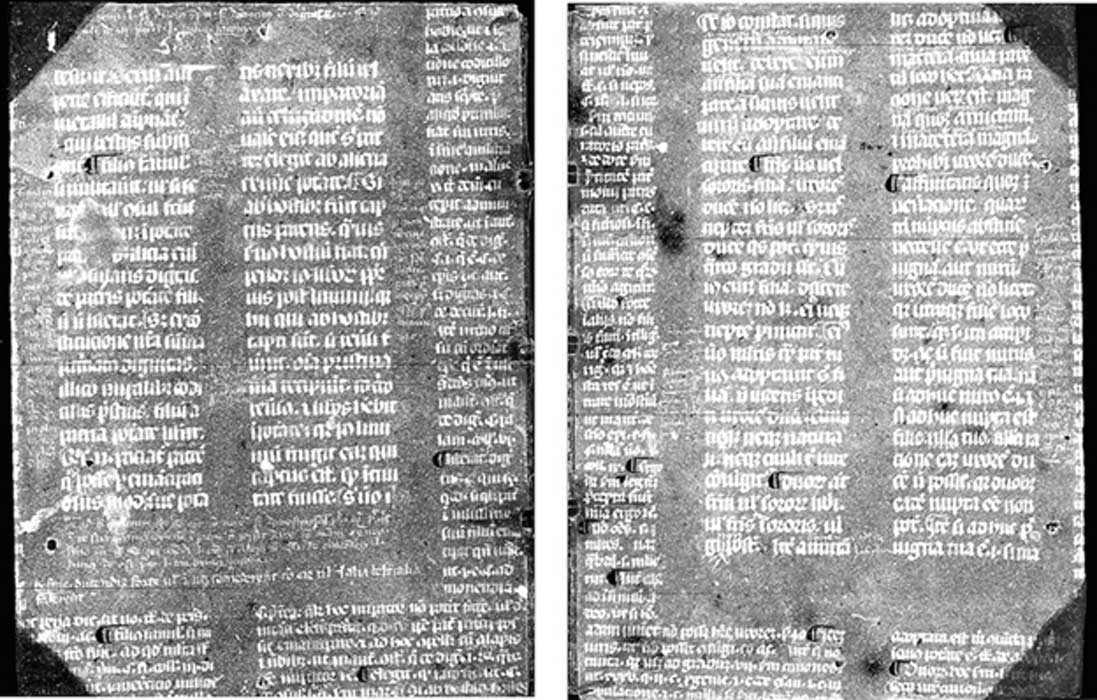6th Century Roman Law Text Discovered After Being Hidden for Centuries Inside Parchment Recycled as Medieval Bookbinding
The secrets within medieval manuscripts can be read once again, thanks to modern technology and new imaging techniques. Experts now suggest that computational imaging and signal processing advances open up a whole new way to read many texts that were once considered inaccessible.
Revolutionary Technology Gives Access to “Hidden” Medieval Texts
By combining two imaging techniques (visible hyperspectral imaging and x-ray fluorescence), a diverse team of Northwestern University researchers has developed a new technology that gives access to medieval texts hidden in parchment re-used for ancient book-bindings, as Live Science reported. The new technology is seen by researchers as truly innovative, as it can be used to help decipher the text under the surface of other bookbinding materials. "For generations, scholars have thought this information was inaccessible, so they thought, 'Why bother?'" the study's senior researcher, Marc Walton, a senior scientist at the Northwestern University-Art Institute of Chicago Center for Scientific Studies (NU-ACCESS), said in a statement as Live Science reports. And continued, "But now computational imaging and signal processing advances open up a whole new way to read these texts."
- A Stitch in Time Saves Nine: The Crafty Story of Embroidery in Medieval Manuscripts
- Ultraviolet light reveals hidden text in ancient book of Arthurian stories
- The Liesborn Gospel Book and its Mysterious Prayer Wheel

The manuscript prepared for imaging techniques (Credit: Emeline Pouyet)
How the Research Began
The book responsible for sparking the study is a copy of Greek poet Hesiod’s Work and Days from 1537. Purchased by Northwestern in 1870, the copy is the only remaining imprint retaining its original slotted parchment binding. Although it was this binding that originally caught the attention of Northwestern librarians, it was the suggestion of writing beneath the parchment on the book board which incited new questions.
When NU-ACCESS researchers studied the binding, they noticed that the bookbinder tried to remove the writing on the book board, likely through washing or scraping. The book board, however, retained two ghostly columns of writing surrounded by marginal comments, which were still visible through the parchment on book’s front and back covers. "The ink beneath degraded the parchment, so you could start to see the writing. That is where the analytical study began," the study's lead researcher Emeline Pouyet, a postdoctoral fellow in NU-ACCESS, stated as Live Science reports.

Use of synchrotron imaging techniques clearly reveals text traces within the parchment (Credit: Emeline Pouyet)
Strenuous Analysis Reveals “Hidden” Roman Law Text
Walton and Pouyet tried a visible-light hyperspectral imaging technique (a method that identifies the spectral range for every pixel in an image) to highpoint the words, but this didn’t help much as the parchment had degraded unevenly. Next, with the help of X-ray fluorescence imaging (a technique that gives data on the ink composition) they tried to get better results but the text was still unreadable.
Eventually, the team of researchers decided to send the book to the Cornell High Energy Synchrotron Source (CHESS) in Ithaca, New York, where highly advanced X-rays captured the text and its marginal comments. After a long and strenuous study during which the researchers used many different methods to identify the text, they were glad to announce that the new find was a sixth-century Roman law code with notes referencing the church's canon law.
- A Spellbinding Story of Discovery: A Medieval Grave for a Wizard and a Magical Artifact
- Fights, Drunks, Baths, and Excuses: Clues to Daily Life in the Roman Empire Via Latin Textbooks
- The Schoyen Collection: 20,000 Ancient Manuscripts from 134 Countries in 120 Languages
Ancient Recycling Provides a Wealth of Material
Bindings made between the 15th and 18th centuries often contain hidden manuscript fragments that can be much older. Bookbinders used to cut up and recycle handwritten books from the middle ages, which had become old-fashioned following the invention of printing. Experiments have found a fragment from a 12th-century manuscript that includes excerpts from the work of Bede, the 8th-century monk and scholar. The researchers were even able to disassemble multiple pages that had been pasted on to one another, making the text legible. In one case, they could read each of three medieval pages that had been glued together. Elsewhere, they found two fragments stuck together underneath the cover of a 16th-century binding.
In the most recent case, experts suggest that this Roman parchment was most likely used in a Law School, where students studied Roman law as a basis for understanding canon law, a quite popular practice during the Middle Ages in Europe.
Despite the mystery of the text hidden in the bookbinding of Hesiod’s Word and Days being now solved, Walton and Pouyet believe their work has just begun, "We've developed the techniques. [Now], we can go into a museum collection and look at many more of these recycled manuscripts and reveal the writing hidden inside of them," a content and excited Walton said as Live Science reports. So the question is: could this really be the beginning of a much larger initiative? Only time will tell!
Top image: The Cornell High Energy Synchrotron Source (CHESS) provided an incredibly clear view of the medieval text. (Credit: Emeline Pouyet)



















